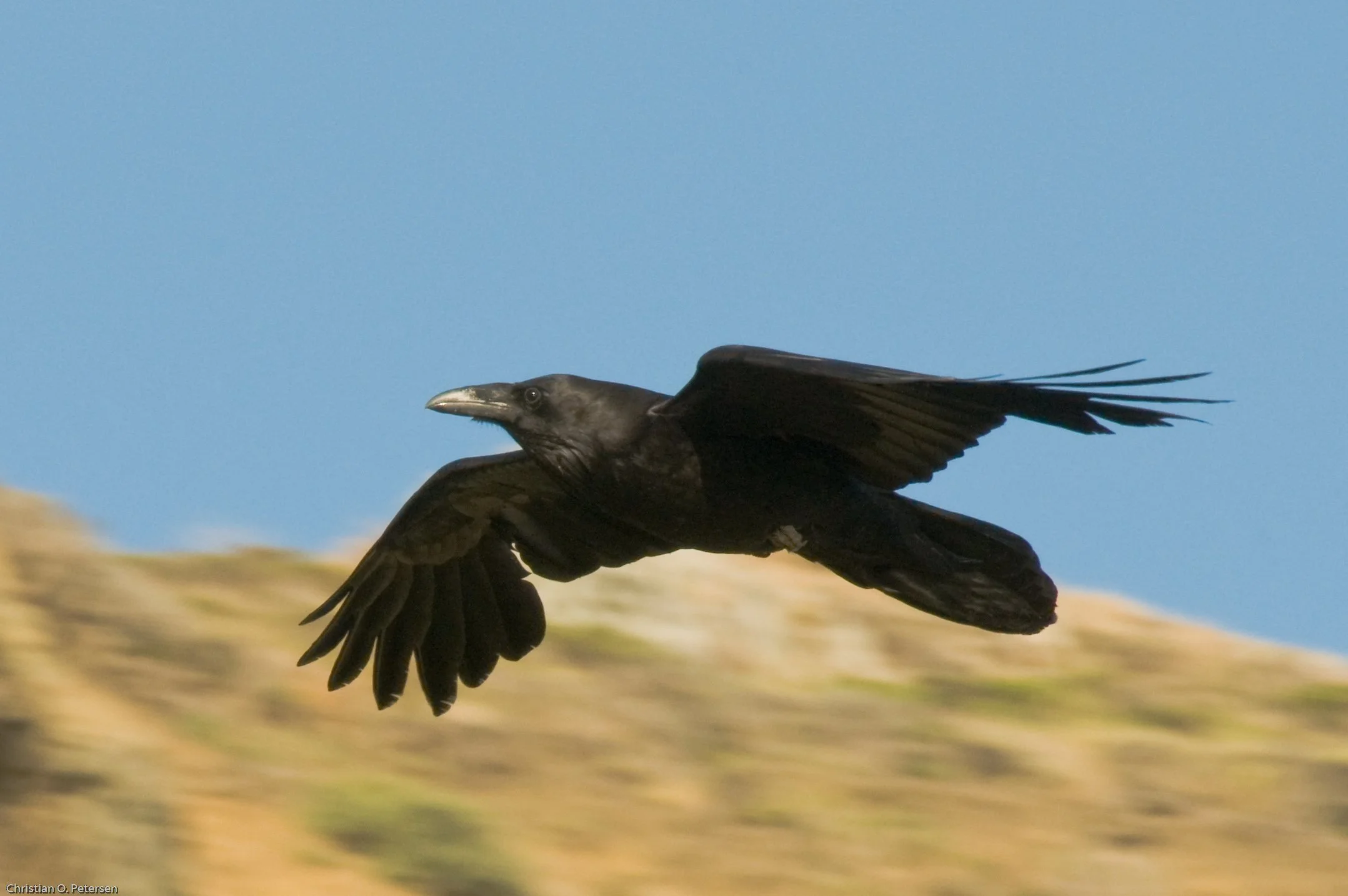Raven
Corvus corax
All types of crow make harsh caws, but the Raven’s is the deepest, the wildest, and the preferred choice of gothic sound designers everywhere.
It’s a guttural croak, sometimes described as a ‘cronk’. Try mimicking it but watch out for the sore throat.
The sound may be reaching you from a bird perched high, in a tall tree or on the ledge of a sheer face of rock. But very often it’s a noise delivered from the open sky. You will likely hear it, from somewhere above you, well before you see the bird.
Despite being our largest crow, big as a Buzzard, Ravens can be surprisingly tricky to see in the air. The call carries a long way. From where you are, the bird itself may appear to be little more than a dark scrap on the wind.
They are also fond of altitudes, and a bird passing high overhead, calling infrequently, can easily pass undetected.
However, if the bird’s seen well you may pick up the broadness of its wings, its heavy, feathered bill and the relatively long diamond-shaped tail.
The sound of a Raven may not always be deemed a welcome one, but many of us in the lowlands of England are happy to hear it again, after a long absence.
Until recently, Ravens were completely extinct from many southern and eastern counties of England, having been exterminated along with the larger birds of prey in the nineteenth and early twentieth centuries.
In recent decades, the Raven has spread back into many of its former haunts. You are now about as likely to see one over the cliffs at Beachy Head or Dover as you are on Dartmoor, or in Snowdonia, or on Cairngorm.
And wherever you find them, you are in the presence of a most characterful bird.
I remember the warden of an RSPB reserve in mid-Wales telling me about the moment he was first convinced that birds sometimes do things for sheer fun. That moment was while watching a Raven repeatedly sliding down a sandy slope, on its back.
It’s more common to see their playful agility in flight. When two or more birds are together - and Ravens do sometimes gather in great numbers - there’s a fair chance you will see them tumble, dive and flip over in mid-air.
The experience might lead to you to conclude that this, in fact, is what skies were made for.
Raven image by Copetersen www.copetersen.com, CC BY-SA 3.0, via Wikimedia Commons

